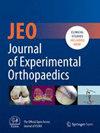Artificial intelligence demonstrates potential to enhance orthopaedic imaging across multiple modalities: A systematic review
Abstract
Purpose
While several artificial intelligence (AI)-assisted medical imaging applications are reported in the recent orthopaedic literature, comparison of the clinical efficacy and utility of these applications is currently lacking. The aim of this systematic review is to evaluate the effectiveness and reliability of AI applications in orthopaedic imaging, focusing on their impact on diagnostic accuracy, image segmentation and operational efficiency across various imaging modalities.
Methods
Based on the PRISMA guidelines, a comprehensive literature search of PubMed, Cochrane and Scopus databases was performed, using combinations of keywords and MeSH descriptors ('AI', 'ML', 'deep learning', 'orthopaedic surgery' and 'imaging') from inception to March 2024. Included were studies published between September 2018 and February 2024, which evaluated machine learning (ML) model effectiveness in improving orthopaedic imaging. Studies with insufficient data regarding the output variable used to assess the reliability of the ML model, those applying deterministic algorithms, unrelated topics, protocol studies, and other systematic reviews were excluded from the final synthesis. The Joanna Briggs Institute (JBI) Critical Appraisal tool and the Risk Of Bias In Non-randomised Studies-of Interventions (ROBINS-I) tool were applied for the assessment of bias among the included studies.
Results
The 53 included studies reported the use of 11.990.643 images from several diagnostic instruments. A total of 39 studies reported details in terms of the Dice Similarity Coefficient (DSC), while both accuracy and sensitivity were documented across 15 studies. Precision was reported by 14, specificity by nine, and the F1 score by four of the included studies. Three studies applied the area under the curve (AUC) method to evaluate ML model performance. Among the studies included in the final synthesis, Convolutional Neural Networks (CNN) emerged as the most frequently applied category of ML models, present in 17 studies (32%).
Conclusion
The systematic review highlights the diverse application of AI in orthopaedic imaging, demonstrating the capability of various machine learning models in accurately segmenting and analysing orthopaedic images. The results indicate that AI models achieve high performance metrics across different imaging modalities. However, the current body of literature lacks comprehensive statistical analysis and randomized controlled trials, underscoring the need for further research to validate these findings in clinical settings.
Level of evidence
Systematic Review; Level of evidence IV.


 求助内容:
求助内容: 应助结果提醒方式:
应助结果提醒方式:


